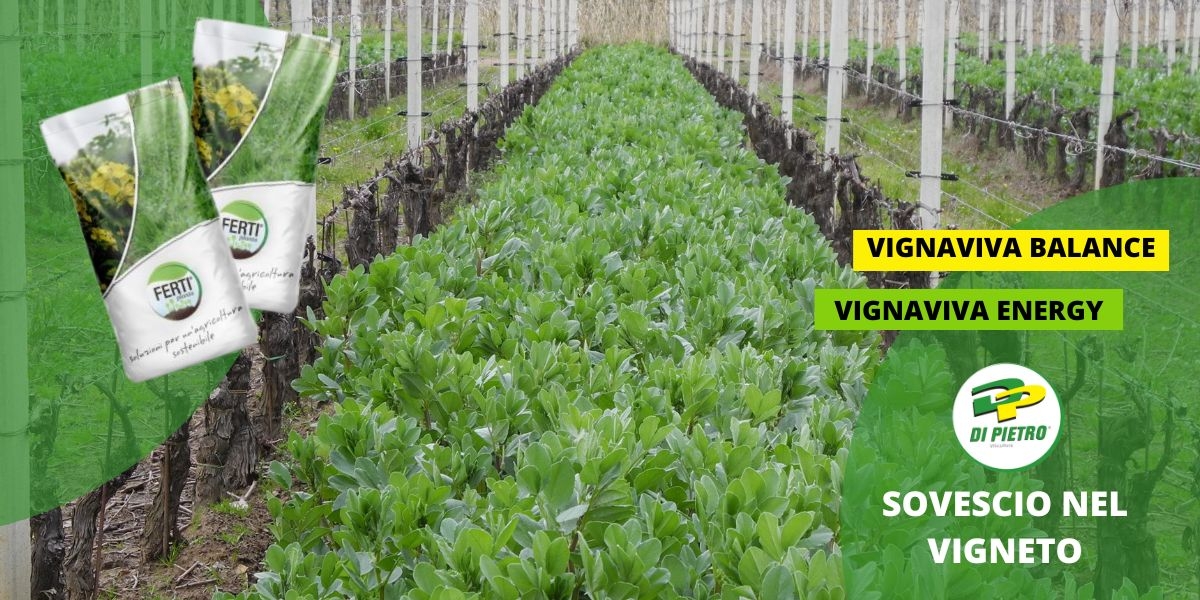How to make green manure in the vineyard | The practical guide

Green manure in the vineyard is one of the best agronomic practices that the winemaker can adopt. This practice consists in sowing, with a precision seeder or even just with a fertilizer spreader, of a mixture containing different essences suitable for developing an important herbaceous mass, destined to be then buried in pre-flowering.
It is well known that this is an operation capable of returning both nutrients and nitrogen to the soil, increasing organic matter and increasing biological activity in the soil, but how is it actually practiced? What are the rules to follow? How long does the entire green manure cycle last, from grassing to burial of weeds? Is it also good for organic farming? For you a complete guide in our article, happy reading!
The best times for sowing and burying green manure in the vineyard
The optimal period for sowing green manure in the vineyard is autumn, after the harvest. For the burial of herbaceous masses, however, it is advisable to wait for the pre-flowering in spring, to ensure that the green manure plants consume less nitrogen reserving it rather to the vines.
How do you prepare soils for planting?
After the harvest, it is necessary to prepare the soil of the vineyard by chopping and eliminating the weeds present, and then work the soil for sowing, at a depth of 20 cm with a harrowing.
It is advisable to sow in alternate rows, to encourage competition with wild herbs and to leave a free row useful for performing all the cultivation operations that are necessary (eg pruning).
How are seed mixtures sown in the vineyard?
After preparing the soil we can proceed to sow the seeds by hand, if the vineyard is of modest size, or with the help of a precision seeder or a fertilizer spreader.
We can bury the seeds slightly with a surface tillage of the soil, using a harrow or manually with a rake or, if you have followed a deep tillage, you can proceed with a rolling.
If you can, sow before a rain or when the soil is moist, in order to promote germination.
When and how should the plants be buried?
The ideal time to bury green manure plants is between April and May, after waiting a couple of days after mowing or chopping them (n.b. with dehydrated green manure grasses, the risk of undergoing fermentation processes that hinder the optimal decomposition of biomass is lowered).
This period corresponds to the time when the plants have reached their maximum development and are in pre-flowering, therefore since plant tissues have a balanced content in fiber and protein, it will be possible to incorporate more micronutrients and organic matter into the soil.
The plant residues must be buried in the 10-15 cm of soil, using a harrow or a surface processing of the cutter. Especially in compact soils, when green manure is buried at excessive depths, decomposition, which leads to the formation of humus, is slowed down due to lack of oxygen.
But which seeds to choose for a quality green manure?
The choice of seeds is essential to obtain a quality green manure: the essences must be well balanced with each other to avoid extreme competitions with the vineyard. Moreover, through a careful selection of seeds we can return to the soil all those nutrients necessary to rebalance the soil.
The seed mixtures recommended by Di Pietro srl are balanced mixtures marked Vignaviva, which collect the most used species of the three leguminous families (eg field bean, clover), grasses (eg barley, oats) and cruciferous (eg mustard, rapeseed). By varying the combination of the different essences, it is possible to create two types of mixtures that meet the different needs of the vineyard, Vignaviva Energy and Vignaviva Balance, discover them here.
What mixture can I use for an organic green manure in the vineyard?
For an organic green manure we recommend the "Vignaviva" seed mixes, which can be used in organic farming as they contain only untreated seed essences. These are mixtures developed by the Vignaviva-Aroenologia technical team, expert in organic management in viticulture, in collaboration with Di Pietro Srl, engaged for over 40 years in the development and distribution of innovative solutions for viticulture, and regularly registered at the SIAN Organic Seed Database.
But how much does it cost to practice a green manure in the vineyard?
The practice of green manure is certainly a strategic weapon to obtain concrete results, but what cost does it have? The costs of a green manure in the vineyard vary according to the area to be sown and the specific problems of the soil that you want to solve with this agronomic practice. In general, the cost of Vignaviva seed mixes varies from 240 to 248 euros per quintal and the recommended dose for sowing ranges from 85 to 100 kg per hectare (see here the online sale of green manure).
Thank you for reading this article to the end!
I hope this article has been useful to you, if you have any doubts and would like to deepen your knowledge of the practice of green manure and its benefits for your vineyards, read here another of our articles. Until next time!








Comments : 0